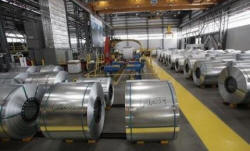|
The Labor Department said on Thursday its
producer price index for final demand fell 0.4 percent last
month, declining for the third time this year. The PPI increased
0.2 percent in March.
In the 12 months through April, producer prices fell 1.3
percent, the biggest year-on-year decline since 2010, after
declining 0.8 percent in March.
Economists had forecast the PPI rising 0.2 percent last month
and falling 0.8 percent from a year ago.
A drop of 0.7 percent in the index for final demand goods
accounted for more than 70 percent of the decline in the PPI
last month. Energy prices fell 2.9 percent after rising 1.5
percent in March. Food prices fell for a fifth straight month.
The dollar, which has gained about 11 percent against the
currencies of the United States' main trading partners since
June, and lower energy prices are keeping inflation subdued.
That, together with signs of a modest rebound in economic growth
after a dismal first quarter, suggest the Fed should be in no
rush to start tightening monetary policy. Most economists do not
expect the U.S. central bank to hike rates before September.
The Fed, which has a 2 percent inflation target, has kept its
key short-term interest rate near zero since December 2008.
Last month, the volatile trade services component, which mostly
reflects profit margins at retailers and wholesalers, fell 0.8
percent after slipping 0.2 percent in the prior month.
A key measure of underlying producer price pressures that
excludes food, energy and trade services ticked up 0.1 percent
after rising 0.2 percent in March.
(Reporting by Lucia Mutikani; Editing by Paul Simao)
[© 2015 Thomson Reuters. All rights
reserved.] Copyright 2015 Reuters. All rights reserved. This material may not be published,
broadcast, rewritten or redistributed.
 |
|





